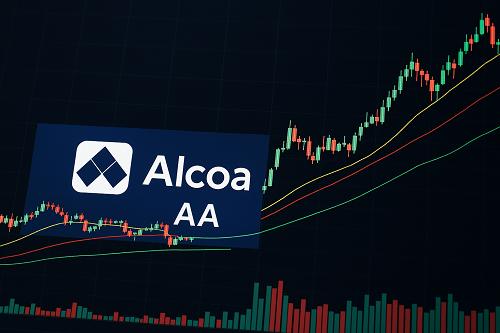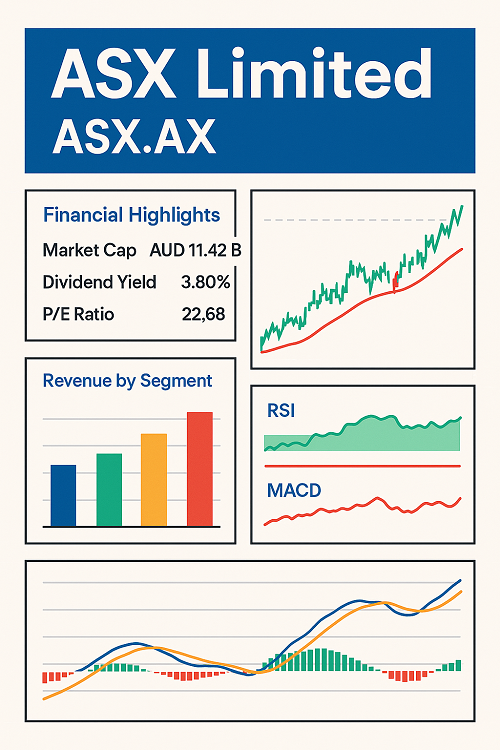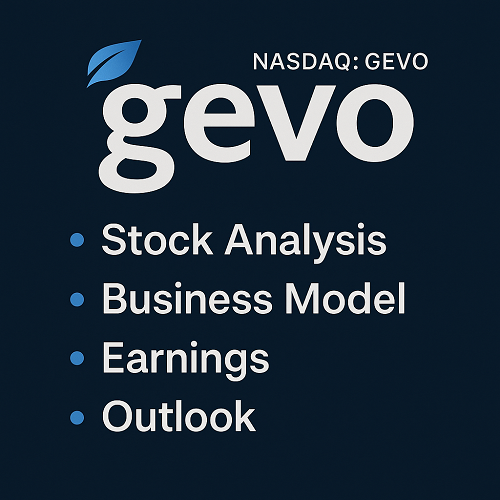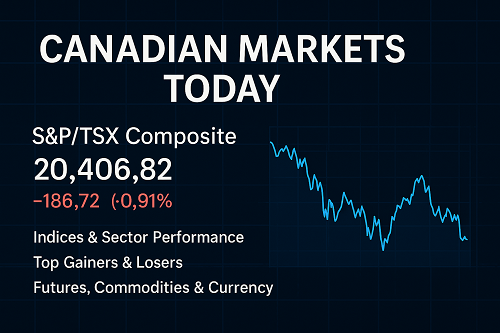Alcoa Corporation (NYSE: AA) is a major player in the aluminium and alumina industry, operating in the global mining and metals sector.
Business model & operations
- Alcoa’s operations span bauxite mining, alumina refining, aluminium smelting and fabrication.
- The company emphasizes both upstream (mining/refining) and downstream (fabricated aluminium products) positions, giving exposure across the value chain.
- Because aluminium is a highly cyclical commodity, Alcoa’s performance is closely tied to global economic growth, industrial demand (automotive, aerospace, packaging, construction) and input costs (energy, raw materials).
- As per its profile, Alcoa employs approximately 13,900 people.
Key facts
- Market Cap: ~US$9–10 billion.
- Price/Book: ~1.5× in latest available quarter.
- Dividend yield: ~1.1%.
Recent Financial Performance & Key Metrics
Recent earnings snapshot
In Q3 2025, Alcoa reported net income of US$232 million, a significant improvement, reflecting both higher volumes and operational cost control.\
Financial health
- Revenue (trailing twelve months): ~US$12.78 billion.
- Net Income: ~US$989 million on a trailing-12-month basis.
- Return on Equity (ROE): ~17.15%.
- Debt/Equity: Total debt ~US$2.66 billion; debt/equity ratio ~42.6%.
Valuation metrics
- Trailing P/E ~8.2×.
- Forward P/E ~13.6×.
- Price/Sales ~0.69×.
These metrics suggest that the market is valuing Alcoa at relatively modest multiples compared to many industrial companies — likely reflecting both commodity risk and cyclical exposure.
Trading range & volatility
- 52-week range: US$21.53 (low) to US$47.77 (high).
- Beta: ~2.20 (5-year monthly) — implying higher volatility than market average.
Industry & Competitive Landscape
Macro drivers
- Demand for aluminium is strongly linked to global GDP growth, particularly in infrastructure, automotive (EVs), aerospace, packaging and construction.
- Energy and raw material costs (bauxite, alumina) significantly influence margins.
- Trade policy, tariffs (especially U.S.–China), and environmental regulations shape competitive positioning. For example, aluminium producers face pressure to decarbonise and invest in renewable energy or low-carbon smelting.
- Technological shifts: Increased use of lightweight aluminium in EVs, aerospace composites, and recycling/secondary aluminium markets are evolving dynamics.
Competitive and peer set
Key competitors include companies like Albemarle Corporation (ALB), Howmet Aerospace Inc. (HWM), and regional aluminium smelters globally. Given the capital-intensity of the business and the cyclical nature of raw materials, the competitive moat is more about scale, cost-efficiency, and integration than branding.
Strengths and potential advantages
- Integrated business: Alcoa’s combination of mining, refining and smelting gives it exposure across multiple stages of the value chain, which can provide cost flexibility and margin resilience.
- Recent capital investments: The company is investing in renewable energy contracts and facility upgrades at its Massena, New York operations.
- Strong balance sheet relative to many commodity peers: moderate debt levels, positive cash flow.
Risks & Catalysts
Key risks
- Commodity cycle risk: A downturn in aluminium demand, or a fall in benchmark aluminium prices, can sharply hit revenue and margins.
- Input cost escalation: Energy prices, alumina/bauxite costs, labour costs, and carbon-regulation costs (for smelting) are key exposures.
- Trade policy/tariffs: U.S./China trade tensions or import tariffs on aluminium can distort supply/demand balance and cost structure. Analyst commentary flags this risk.
- Environmental & regulatory risk: Aluminium smelting is energy-intensive. Carbon regulation, emissions policies or required capital investments in decarbonisation could add costs.
- Volatility & operational risk: As a cyclical business, profitability can swing dramatically; this is further compounded by the company’s high beta.
Potential catalysts
- Strong infrastructure spending (especially U.S. and globally) could drive aluminium demand higher.
- Growth in EVs & aerospace: Lightweight aluminium usage in these industries could benefit Alcoa’s downstream fabricated aluminium business.
- Operational improvements & cost cuts: If Alcoa continues to improve margin and efficiency, the market could re-rate the business.
- Low valuation re-rating: Given its modest valuations (P/E/Price-to-Book), a positive earnings surprise or improving outlook could spark multiple expansion.
Valuation & Analyst Forecasts
Analyst consensus
According to Yahoo Finance’s compilation:
- Recommendation Rating: ~1.92 (which corresponds to “Strong Buy” zone).
- Analyst price targets span from low ~$27 up to high ~$45+, with an average near ~$34.50.
Valuation argument
When valuing Alcoa, one must account for both the cyclical nature and the commodity exposure. A simplified valuation approach:
- Using forward earnings of ~US$3.0–3.5 per share (assuming earnings strength continues) and a conservative forward P/E of ~10–12× gives a target range of ~$30–42 per share.
- Considering the company trades at ~8× trailing earnings, the market seems to be pricing in a degree of caution.
- Given book value per share is ~$24.51 (latest) and price ~US$38–40, the Price/Book of ~1.5× suggests some premium above net assets.
Comparative valuation
Compared to broader industrial firms and metal producers, Alcoa’s valuation is on the lower end — reflecting risk of earnings swings but also potential for upside if the cycle improves.
Investment Thesis: Bull Case vs Bear Case
Bull Case
- If global industrial and infrastructure demand accelerates, aluminium price strength could boost Alcoa’s revenues and margins significantly.
- Cost improvements and capital investments (including renewable energy contracts) may drive margin expansion.
- The stock appears undervalued relative to historic mid-cycle earnings and asset base, offering potential upside if the cycle turns.
- With moderate debt and positive cash flow, Alcoa is better positioned than many peers to weather downturns and capitalise on up-cycles.
Bear Case
- A global economic slowdown or weaker industrial demand could depress aluminium prices — dragging earnings lower.
- Rising input costs, energy prices or regulatory burdens (carbon, emissions) could compress margins.
- The high beta indicates elevated risk — share price could suffer in a broad commodity or industrial downturn.
- Valuation doesn’t fully account for downside risk if the cycle turns; downside could be substantial if earnings collapse.
My summary verdict
Alcoa offers an interesting value play in the metals space — if you believe in a rebound in industrial/infra demand and aluminium pricing it has decent upside. But it is not a low-risk defensive stock: the cyclical nature demands a tolerance for volatility.
Technical & Trading Considerations
From a trading perspective:
- Given its 52-week range (~US$21.5 – 47.8), there is significant room to move — both upside and downside.
- The high beta (~2.2) means the stock may amplify market moves; in strong risk-on environments it could outperform, but likewise underperform in risk-off phases.
- For swing traders: breakout above recent highs or a strong earnings release could trigger a momentum play. For long-term investors: focus on the underlying fundamentals and cycle timing.
- Risk management is key: given earnings sensitivity, set stop-losses or limit exposure relative to portfolio size.
Frequently Asked Questions (FAQs)
Q. What is Alcoa’s dividend yield and is it safe?
A. The forward annual dividend is ~US$0.40, yielding ~1.1%. The payout ratio is modest (~9.4%), suggesting the dividend is currently well covered — but it is not especially high and could be cut if earnings fall sharply.
Q. How cyclical is Alcoa’s business?
A. Very cyclical. Profitability is heavily influenced by commodity (aluminium) prices, global industrial output, energy costs and trade flows.
Q. Is Alcoa a good buy now?
A. If you believe global infrastructure and industrial demand are set to improve, then yes — the valuation is attractive compared to many peers. But if you are worried about a slowdown or commodity price decline, you may want to wait or limit exposure.
Q. What are the key risks investors should watch?
A. Weakening aluminium pricing, rising energy/input costs, regulatory pressures (especially environmental), global economic slowdown and high volatility (given high beta).
Q. What timeframe should investors consider?
A. Medium-term (3-5 years) seems more appropriate. Short-term trading is possible given volatility, but long-term success depends on the commodity cycle and structural demand shifts.
Conclusion
In summary, Alcoa Corporation (AA) presents a compelling albeit risk-laden investment opportunity. Its integrated business model, decent balance sheet, modest valuation and exposure to potential upside in aluminium demand make it attractive from a value standpoint. However, the cyclical nature of its industry, sensitivity to input costs and macroeconomic variables mean that investors must be comfortable with volatility and must manage risk accordingly.
If you’re looking for a commodity-exposed industrial play with upside potential, and you believe the global economy (and aluminium demand) will strengthen over the next few years — Alcoa may warrant a position. But if you prioritise stability, defensiveness or non-cyclical exposure, you may prefer to stay on the sidelines or hedge your exposure.





 XAUT-USD
XAUT-USD  AMD
AMD  MARA
MARA  SHOP
SHOP  BULL
BULL  CL=F
CL=F